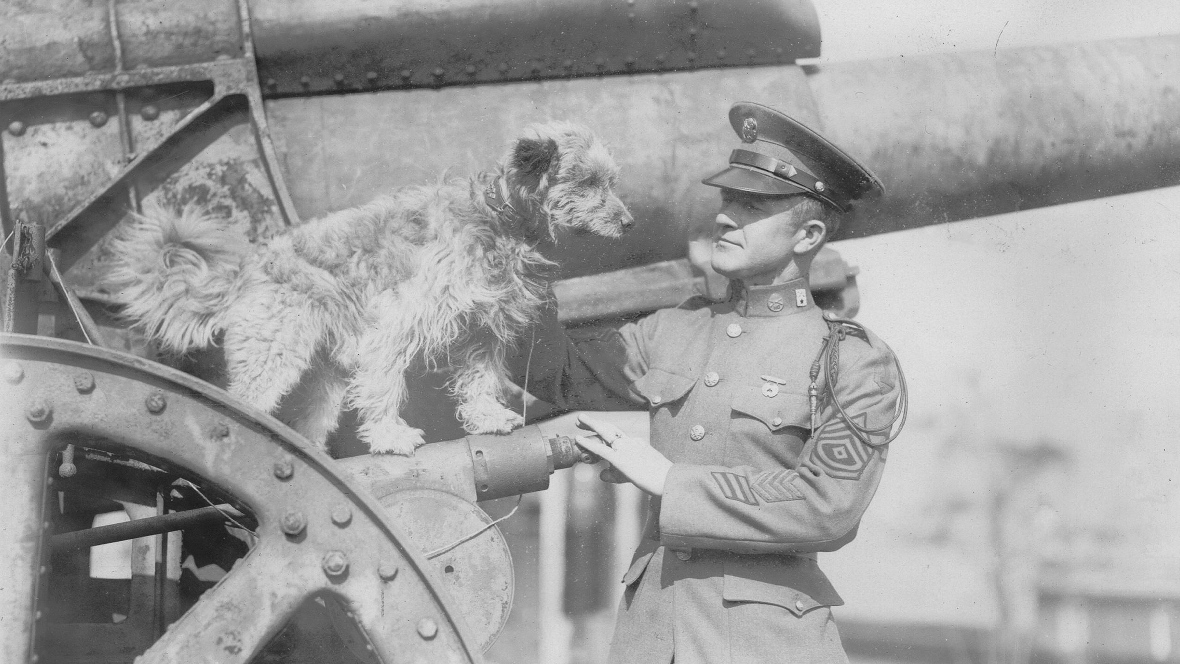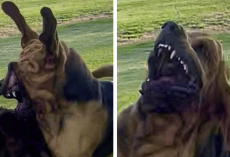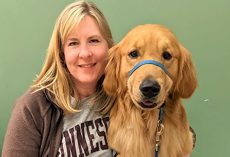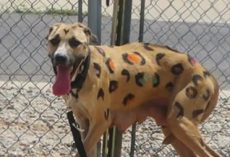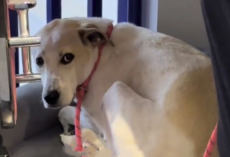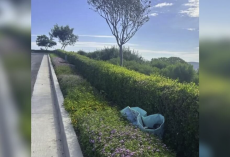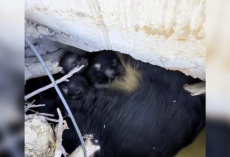“His choice seems to have been to be with Donovan wherever he was,” one of Rags’ biographers concludes, “regardless of the dangers or even of what Donovan would have preferred…”
Abandoned on the streets of Paris, searching for a kind soul to take pity on him, that’s how Rags was found. Like most of the dogs in history that made it into the military, he was adopted by someone in the military. An A.E.F. signal corps specialist serving with the U.S. 1st Infantry Division, Private James Donovan, to be exact.
The story of this mixed breed terrier isn’t really something that is incredibly unique, especially compared to our stories of dogs in history. But, Rags was a remarkable dog who was more than just a mascot to the First Division of the American Expeditionary Forces in World War I, and that does not mean that his story is not worthy of being told. He lived a life of serving the military alongside his best friend.
After the war, a lot of the stories were buried and forgotten forever and those who remembered them probably aren’t around to tell them anymore. That’s why it’s always worth some kind of celebration when we are able to get a hold of records and written documentation about our heroes, most especially the furry friend-shaped ones.
If only history books and classes talked about the animals involved in history-making, maybe the children who are studying would be pulled in and actually be more interested in learning about history. Who wouldn’t want to hear all about dogs being heroes?
We’re sure that you’re already looking forward to finding more about Rags, so let’s get to it!

THE DISCOVERY OF RAGS THE PUP
In 1918, our young, future-dog owner soldier had been asked to march in Paris’s 1918 Bastille Day parade and that called for a celebration. After reveling in a café somewhere in the famous part of Montmartre, Private Donovan and George Hickman had a few to drink and were making their merry way home because they overstayed their visit.
At the time, Rags was just a nameless and homeless little dog, roaming the streets of Paris. Looking literally like a pile of rags, Donovan stumbled upon it and wondered why it was making a sound. The accidental bump of one of their boots aroused the bundle and it barked, revealing that the men had come upon a dog, not rags.

He stooped down to the fully awake dog and just as he was trying to figure out what to do with the pup, three MP’s arrived on the scene, and they quickly figured out that Donovan was A.W.O.L. He then used the pup as an excuse for him being late because, to avoid being Absent Without Leave, Donovan told Military Police that Rags was the missing mascot of the 1st Infantry Division and that he was part of a search party. It is obviously a lie, but a lie that somehow made it past the MP. Donovan might not have known it at the time, but that was almost some kind of foreshadowing. (Why? Keep reading to find out.)
Successfully convincing the MP, they were allowed to return to his unit. Donovan escaped punishment and was allowed to keep Rags largely because he was being ordered to the front lines.
RAGS RISES UP TO BE A HERO DURING THE WAR

Within just two weeks of being in the unit, Donovan, along with Rags, was sent off to the 2nd battle of the Marne that waged from July 18th to August 6th. Donovan’s job in the front lines was incredibly important and was vital to their survival. He had to string communication wires between advancing infantry and the supporting field artillery. Not only that, but he also was the one who had to repair the field telephone wires that had been damaged by the shellfire.
When the communication lines were down, runners had to be used as a substitute, but being one of those meant that you had to face the possibility of being wounded, killed, or not being able to get through the shell holes and barbed wire. More often than not, runners did not make it back. So, that’s when Donovan decided that it would be best to train his new little friend, Rags, to carry the written messages attached to his collar and be the hero that they desperately needed.
That being said, it still was dangerous for a little dog to be doing all those things. He had to carry messages to the front line amid gunfire and shell blasts. As well as him sniffing out gaps in the communication wires laid by the signal corps so they could be fixed. Truly a remarkable dog that barely needed to be trained, Rags was even able to predict incoming shells so that soldiers near him could take cover that much more quickly.
One important day that needed Rags’ services was in late July of 1918, during a counterattack driving towards the Paris-Soissons road. That day, Rags and Donovan found themselves with a group of advancing infantry that had been cut off and surrounded.
Rags was able to slip under the barbed wire, avoid the Germans, and make his way through the shell holes back to the 7th Field Artillery. The message was passed on to headquarters, and a supporting artillery barrage was laid down, and reinforcements sent in, and the cut-off group rescued.
During this same campaign, Rags came under enemy shell fire for the first time, being a dog with better hearing than us humans, he could hear the incoming rounds long before the soldiers could. He quickly learned to drop to the ground upon hearing the sound of an incoming shell. That’s when they realized that it was a huge advantage on their end and they began to use him as an early warning system for their safety.
If it weren’t for Rags, no one would have provided the much-needed boost to the morale of the men with whom he served alongside.
Because they were spending so much time together in the trenches, one way to keep their mind off of the doom and gloom was they would teach Rags a few tricks. One of the first tricks he ever learned outside of his training was how to “salute” by sitting up and holding his front paw up close to his head. He eventually became an expert at that trick and would even exchange “salutes” with some of the important personnel in the military. Another trick he eventually learned was to greet any grey-uniformed figure (Germans) with a low growl and a snarl.

In their last campaign together, Donovan and Rags were alongside each other during the ghastly Meuse-Argonne offensive toward the end of the war. In the Argonne Forest, it was impossible to see where the communications lines were cut, Rags had to be sent back with a message. That’s when things took a turn for the worst. Just as when Rags set off, the Germans began firing mustard gas shells.
Rags was mildly gassed and was also hit in the paw with a splinter and his right ear was badly mangled by a concussion shell. It doesn’t stop there, a needle-like shrapnel also got embedded under his right eye. Despite barely managing to move, the confused dog powered on until he could no longer continue with his delivery. Rags was found by one of the American infantrymen and he delivered both the dog and the message to where it needed to be.
Donovan was also severely gassed during this battle, and he too was wounded by shell fire. Like Rags, he was carried back to the rear where the dog and owner were reunited. Rags was placed on Donovan’s stretcher. The two were kept together and taken back to a dressing station and then several different hospitals. Both were given prompt medical attention “on orders from the Division.”
Members of the 1st Division smuggled Rags by train and ship from Brest in France to Fort Sheridan in Chicago. He accompanied James Donovan, who was placed in the Fort Sheridan Base Hospital, which specialized in gas cases. Rags made his home at the base firehouse and was given a collar with a tag that identified him as 1st Division Rags.
Rags, though badly injured, recovered after being treated with utmost priority. However, the same thing could not be said about his partner, whose health only grew worse even when returned to the United States.
LIFE AFTER THE WAR
In the new base that he lived in, Rags would frequently join the troops at the end of the day as they stood at attention as the flag was lowered, sometimes even saluting as well. Donovan, however, showed no improvement.
In 1919, the worst thing that could happen to their partnership, happened. One of them had to say goodbye forever and it was Rags’ partner, Donovan. He died from the lingering effects of the mustard gas he received in the Argonne Forest.
Some of the soldiers didn’t know how to let the dog know that his master and partner had passed on.
A few of the men brought Rags to the bed in which Donovan had died. The body was gone but the sheets had not yet been stripped.

“Anyone who knows dogs is aware of the stages of their grieving,” writes Hayter-Menzies. “Their favorite person leaves for only a few days, but for the dog it is forever. There is waiting and pining at the doors and windows and jumping to investigate every remotely familiar sound, which could be the longed-for person returning home. …[But] the dog seems gallantly determined to face loss by adopting new loves, new faces to watch and footsteps to listen for. Behind it all, the longing for the original person is still there, and if that person does return, the dog’s joy is uncontainable. Rags was no exception to this pattern, but as with every challenge in his life, he quickly adapted. Rohan [the first biographer] was told that on being placed on the bed, Rags “sniffed, stretched himself, his forepaws extended and his nose buried between them, and lay motionless for more than a minute. He then hopped to the floor and headed for the ward’s exit.”
Rags then spent about a week not eating much and simply lying quietly at the firehouse, his latest home. It was said he never again returned to the hospital where Donovan died.
Life had to continue on for Rags, even if he lost his dear friend. He became the post dog in the new Fort he’s staying at, living in the firehouse and eating at various mess halls that he carefully selected. He was the one in charge of watching over several soldiers on their posts.
A year later, Major Raymond W. Hardenbergh arrived at the fort and his family eventually adopted Rags. After this adoption, information about Rags became scarce and little is known of him. People only ever heard of him again was when he passed away at the age of 20.
Rags was buried with military honors, and a monument was erected at the Aspin Hill Memorial Park in Silver Spring, Maryland near the Hardenbergh home.
A brave life-saving military dog and a true friend, that is what Rags will be remembered for and more.
It’s stories such as this that make us wonder why dogs were never really included in history books. As we look at our pets at home that are living comfortable lives, let us give praise to those who served and lived a life of service.
If this was something that you enjoyed reading, you’re in luck! Please feel free to read through the other Dogs in History stories about dogs in history here on our website!

